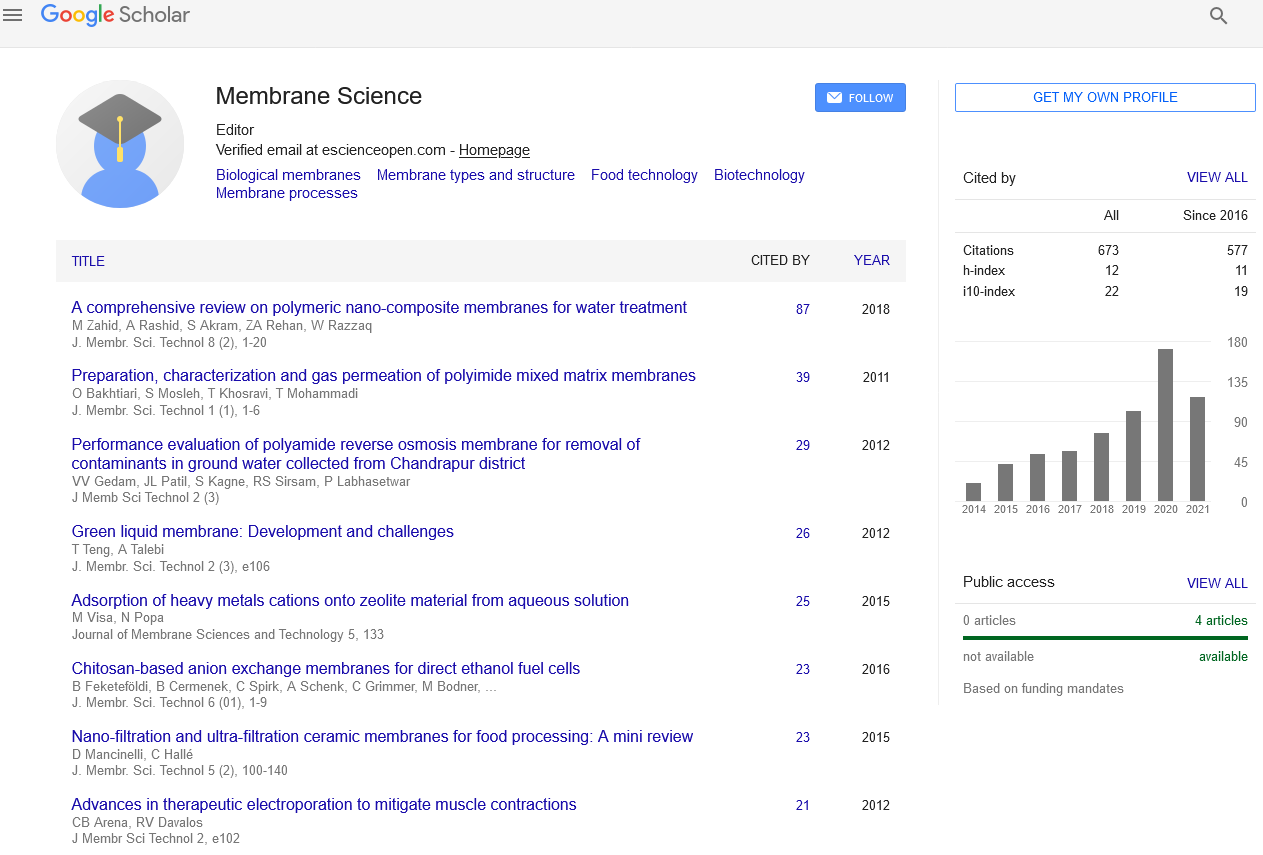Indexed In
- Open J Gate
- Genamics JournalSeek
- Ulrich's Periodicals Directory
- RefSeek
- Directory of Research Journal Indexing (DRJI)
- Hamdard University
- EBSCO A-Z
- OCLC- WorldCat
- Proquest Summons
- Scholarsteer
- Publons
- Geneva Foundation for Medical Education and Research
- Euro Pub
- Google Scholar
Useful Links
Share This Page
Journal Flyer

Open Access Journals
- Agri and Aquaculture
- Biochemistry
- Bioinformatics & Systems Biology
- Business & Management
- Chemistry
- Clinical Sciences
- Engineering
- Food & Nutrition
- General Science
- Genetics & Molecular Biology
- Immunology & Microbiology
- Medical Sciences
- Neuroscience & Psychology
- Nursing & Health Care
- Pharmaceutical Sciences
Abstract
A Comprehensive Review on Polymeric Nano-Composite Membranes for Water Treatment
Muhammad Zahid, Anum Rashid, Saba Akram, Zulfiqar Ahmad Rehan and Wasif Razzaq
During last few decades, membrane technology has emerged as an efficient technique over conventional methods due to its high removal capacity, ease in operation and cost effectiveness for wastewater treatment and production of clean water. Membrane based separations are commonly based on polymeric membranes because of their higher flexibility, easily pore forming mechanism, low cost and smaller space for installation as compared to inorganic membranes. Commonly employed membrane fabrication phase inversion method has been shortly reviewed in this article. Major limitation of membrane based separations is fouling and polymeric membranes being hydrophobic in nature are more prone to fouling. Fouling is a deposition of various colloidal particles, macromolecules (polysaccharides, proteins), salts etc. on membrane surface and within pores thus impedes membrane performance, reduces flux and results in high cost. Modification of polymeric membranes due to its tailoring ability with nanomaterials such as metal based and carbon based results in polymeric nano-composite membranes with high antifouling characteristics. Nanomaterials impart high selectivity, permeability, hydrophilicity, thermal stability, mechanical strength, and antibacterial properties to polymeric membranes via blending, coating etc. modification methods. Characterization techniques has also discussed in later section for studying morphological properties and performance of polymer nano-composite membranes.
Graphical Abstract


